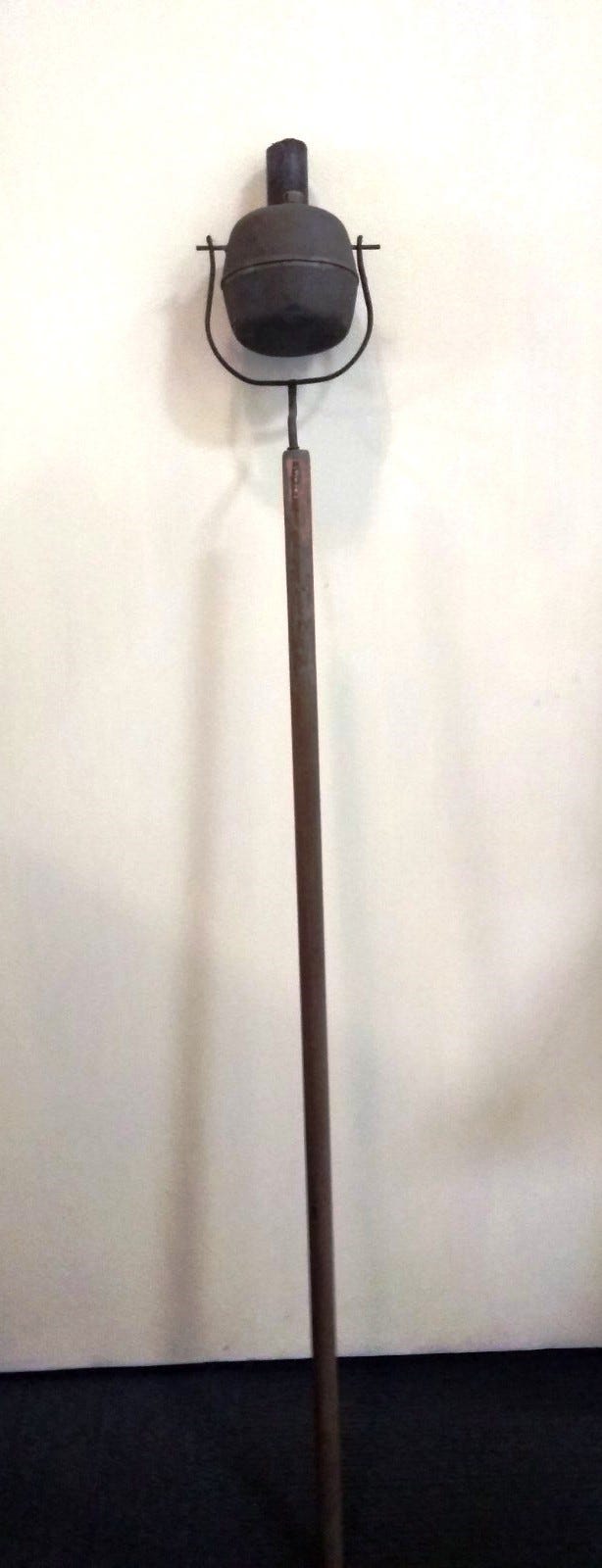ACHC #1968.130.1
We pulled this book off the ACHC library shelf the other day and wondered why we had it. What was the relationship to Andover or our collection?
Our collection policy is to collect things that tell Andover’s history - photos, objects, books, journals, papers, etc., that share the stories of the town and its residents. With over 50,000 items in our collection, we are aware of space. On the surface, this book didn’t seem to have any connection to Andover.
But, sometimes you can walk by something for years and never notice it. Hanging in our barn, high on a wall behind the Hunneman tub pumper is this:
ACHC #1996.056.1
This is a political campaign torch. Basically, it is a kerosene lamp hung on the end of a wooden pole.
Such torches were carried in nighttime political campaign processions when candidates for public office would parade through cities giving speeches. From the mid 1850s to 1900, night parades were particularly popular, and people crammed the streets to watch. After toiling in factories, fields, or on the docks all day, torch parades were a pleasant entertainment.
Parades lasted 2-3 hours. Marchers wore hats and capes to protect their clothing from the dripping kerosene. Their uniforms were bright patriotic colors and the marchers developed precision moves much like a drill team. Fire Fighters also usually participated in the torch parades. They came with their own uniforms and parade training.
Torch parades reached an unprecedented scale with the 1860 campaign of Abraham Lincoln. The concept was started in Hartford, CT. in 1858 by five young men who carried lanterns to escort Lincoln to his hotel after he had given a speech against slavery. After that, the Lincoln campaign encouraged the expansion of “Wide Awakes” groups throughout the country to promote voter registration and Lincoln’s political campaign agenda, as well as offer a protection to the campaigners. By election day 1860, there were roughly 500,000 members.
From Harper's Weekly, courtesy of the Library of Congress
This is a Lincoln Campaign parade in New York City held on October 13, 1860. 10,000 "Wide Awakes" marched in rows that stretched three miles.
The Harper's Weekly description reads, “Thousands of torches flashing high in narrow streets, crowded with eager people…and the mingling of music from scores of military bands…but generally a silence like the quiet flow of a vast river; with the waving of banners…and through all, out of all, and over all, the splendor of exploding fire-works…the nearest approach to a purely poetic popular demonstration that we have had.”
“Torches have no dangerous antecedents. Fireworks are of no party. Even the bitterest of political opponents of the party to which the organization belongs could not but confess how beautiful the scene was.”
Torch political campaign parades and nighttime rallies continued after the Civil War. In 1876, 5 patents were approved on different styles of campaign torches. The one in our collection is imprinted with the words, “S[wing} Burner APR 15 76, presumably an 1876 patent. The nighttime parades died out around 1900.
Although there were thousands of parade torches produced, not many still exist. The Smithsonian Institute Museum of History and Technology has a large collection. Oh, and we have one!
ACHC #1996.056.1
Do you have comments or a story to share?








